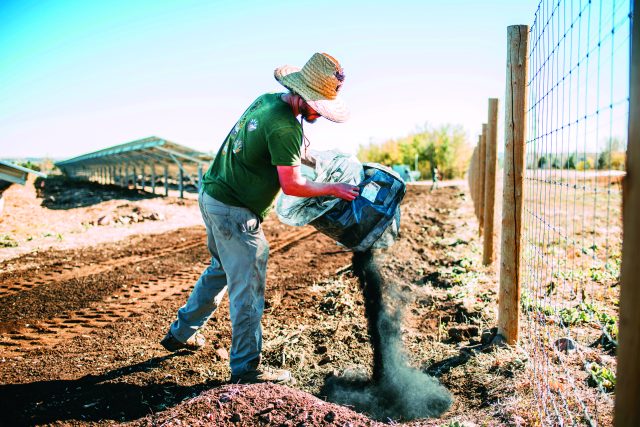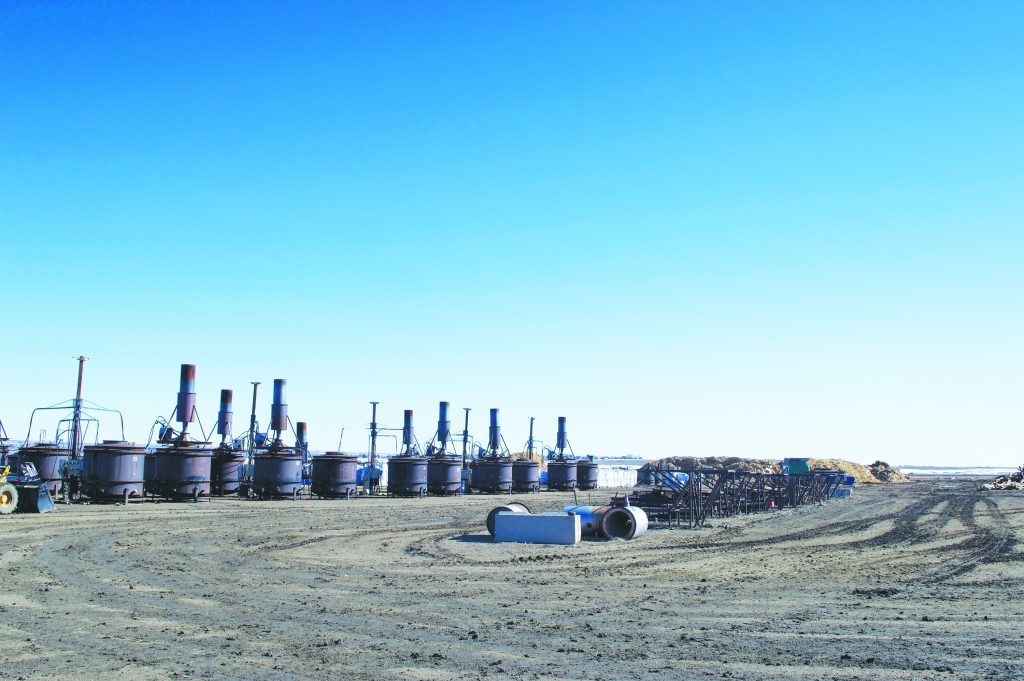
James Gaspard sold his electric and hybrid bus company and bought 50 acres of land in the mountains west of Fort Collins to “get away from everything.”
Then the pine beetles came and “wiped everything out.”
“This company was trying to figure out what to do with the dead trees, and how to make a marketable product and solve a problem,” he says.
Gaspard founded Biochar Now in 2011, using the excess pine beetle kill on his property to produce the charcoal-like substance biochar, which can sequester carbon and improve soil quality and plant health.
Biochar isn’t new; it’s been produced by people in the Amazon basin for more than 2,500 years. But using the product at scale to help mitigate the climate crisis is giving biochar new demand.
More than a decade after starting Berthoud-based Biochar Now, Gaspard says interest in biochar is at an all-time high.
“The momentum is there, and investors are throwing money at this industry,” he says.

Boulder County is exploring how biochar could help with its circular economy initiatives and fire mitigation goals — two of the County’s five Climate Innovation Fund recipients produce biochar (Biochar Now and Takachar), and there’s a pilot project being drafted by the County and Denver Water to turn nearly 100 tons of woody material from the Gross Reservoir expansion into biochar.
At the state level, a bill (HB 1069) was introduced to the Colorado House of Representatives on Jan. 19 that would create a working group to study using biochar to plug old oil and gas wells.
But despite the buzz, biochar is still a developing industry and its markets, production methods and uses are being established, standardized and researched.
Sarah Federman, senior science analyst at Carbon Direct, a company that helps organizations reach their climate goals, helped Boulder County choose the recipients of its Climate Innovation Fund.
“[Biochar] needs a little bit of work to scale [up], but the potential [benefits] in terms of climate and community are enormous,” she says.
Taking your breath away
Biochar is produced by putting organic material through pyrolysis, which heats the biomass in the absence of oxygen.
While you can technically use any organic material, Biochar Now’s site in Berthoud is designed to use waste wood like pallets, dead trees or other forest trimmings for its feedstock. It also has expanding operations in Texas and North Carolina that will use treated wood such as railroad ties and telephone poles.
When biochar is created, it locks up carbon from the organic material for thousands of years.
Dan Sanchez, a biochar expert with Carbon Direct, says he sees a lot of experimentation around biochar in the U.S. Most companies incorporate fast pyrolysis, which flashes biomass with high heat (500-800 °C) to create biochar in seconds.
Rather than hot and fast, Biochar Now heats organic material at a high temperature over 10 hours. Gaspard says that process makes “unique carbon with unique properties.”
“My mistake was calling [my product] biochar, because it’s something different,” he says, claiming his company’s biochar is the only one approved by the Environmental Protection Agency for unrestricted use under the Toxic Substance Control Act. “It’s higher quality.”

James Gaspard hold a sample of his biochar. Photo by Will Matuska.
Gaspard calls the developing industry the “wild, wild West” because of limited standardization of biochar.
The U.S. Department of Agriculture says “biochar does not refer to a singular product.” Rather, it is “physically unique” due to things like feedstock, pyrolysis processes and storage conditions. Most definitions of biochar don’t specifically say how hot or how long to put biomass through pyrolysis for it to become biochar.
Sanchez says Biochar Now is one of the only “slow pyrolysis” companies he is aware of, and that some evidence suggests this process can store more carbon from the input organic material than fast pyrolysis.
Gaspard says Biochar Now’s product has been used at oil spills and superfund sites to clean up salts and toxins as well as heavy metals like mercury and PFAS chemicals that never break down. With biochar’s sponge-like quality, Gaspard says his largest market is for industrial-level water treatment.
While there are lots of potential applications for biochar, Sanchez says the biochar market is mostly focused on soil application. The other applications, he says, “still need to prove out.”
Biochar in Boulder County
There are numerous efforts in Boulder County to use and develop biochar.
Nick DiDomenico, co-founder of Drylands Agroecology Research (DAR), a nonprofit that works to increase biodiversity and soil carbon sequestration in degraded landscapes, uses biochar in some of his regenerative designs as a soil amendment. He’s heard people in the regenerative agriculture space talk about biochar “like it’s a hotel for biology.”
“The potential for collecting and storing water in the soil, thus being able to regenerate landscapes quickly, is really an effective potential use of biochar,” he says.
Studies show biochar improves soil fertility and quality by increasing the ability to retain moisture, attract microbes and preserve nutrients in the soil.
One of DAR’s partner farms, The Yellow Barn Farm, will produce a small amount of biochar this spring with a mobile kiln from Takachar, a biochar production company that received support through the County’s innovation fund to work with Boulder-area farms to produce decentralized biochar.
DiDomenico says from a sustainability and regenerative systems standpoint, it’s important to avoid shipping products a long way to “create miracle solutions in the soil.” The more local, the better.
“Where there’s a lot of wood, there’s a lot of potential to make biochar,” he says.
More woody biomass will be coming out of forests around Boulder County, in part because of the 1A Wildfire Mitigation ballot measure passed by voters in November 2022 that established a 0.1% tax (a penny on $10) for wildfire mitigation efforts.
Currently, Biochar Now mostly makes biochar at its centralized location in Berthoud. But the County’s innovation fund is helping cover costs to mobilize Biochar Now’s equipment to process biomass at the source — like at Nederland’s Community Forestry Sort Yards.
Tim Broderick, senior sustainability strategist in the County’s Office of Sustainability, Climate Action & Resilience, says the County wants to see how biochar could fit into its fire mitigation tool box.
“If we can utilize [biochar] in either forest lands or agriculture lands to increase soil health, that’s a beautiful circular economy,” he says. “We view [these projects] as peering into what is possible.”














